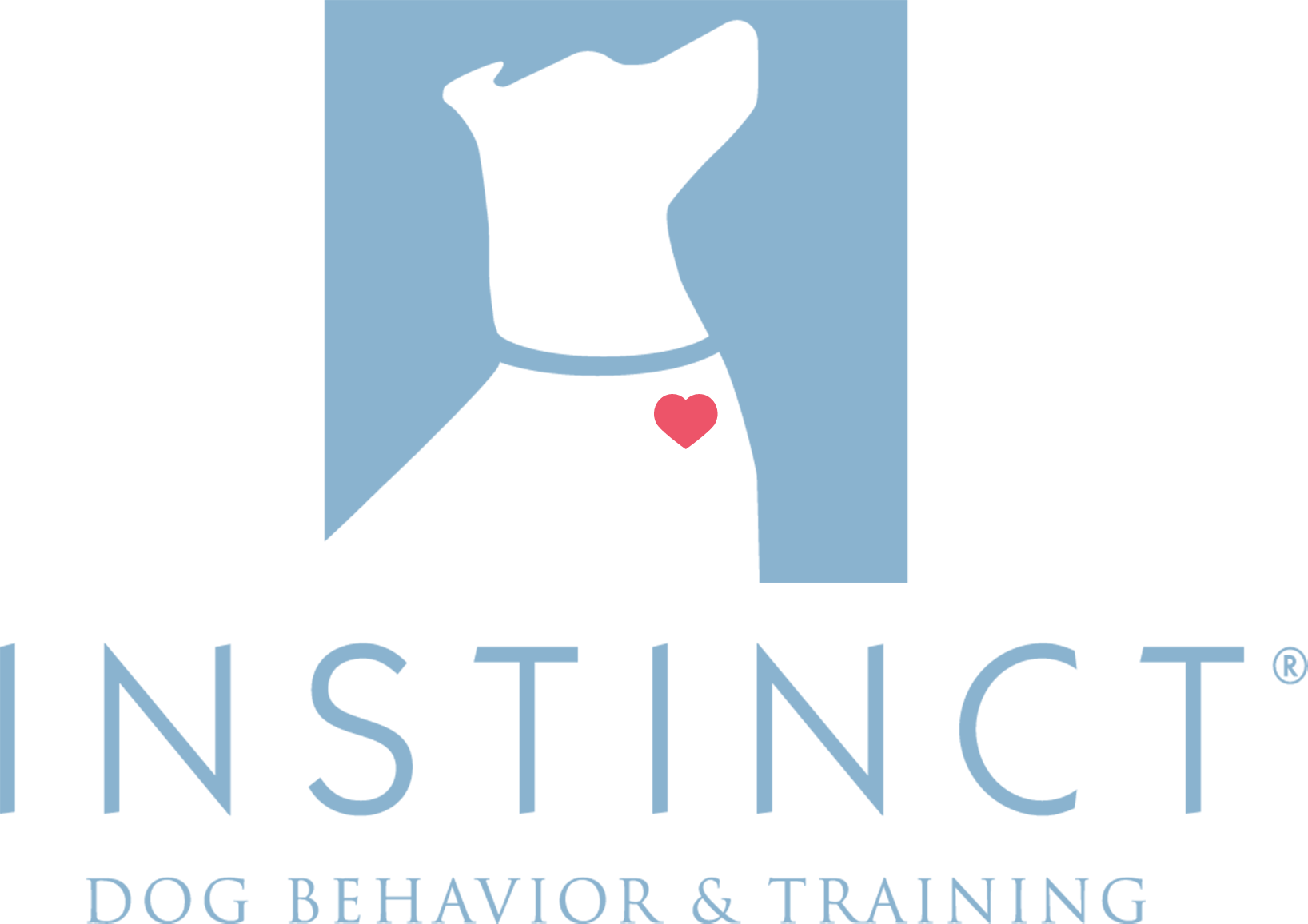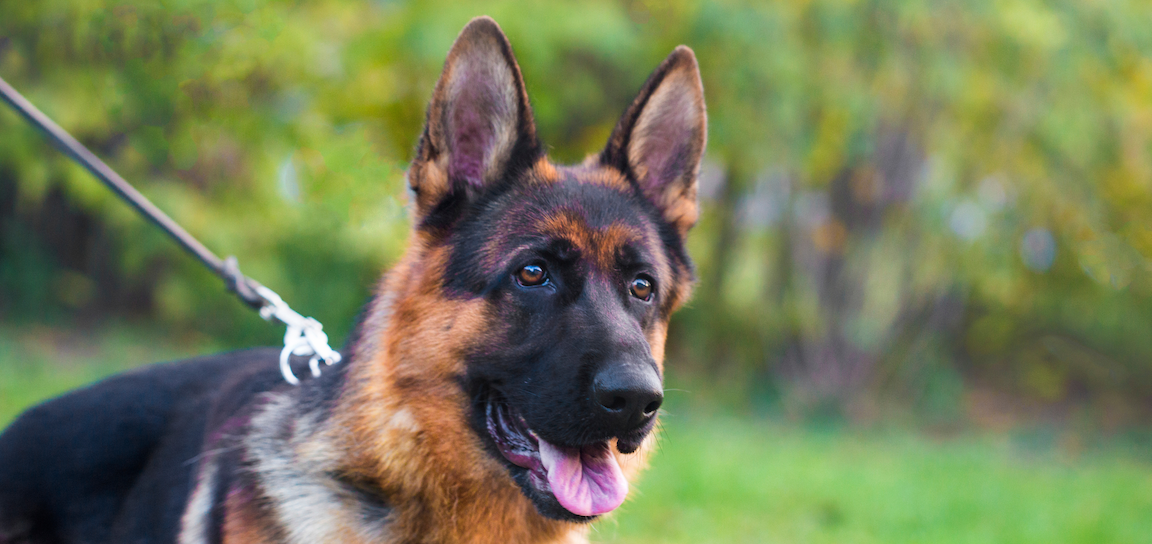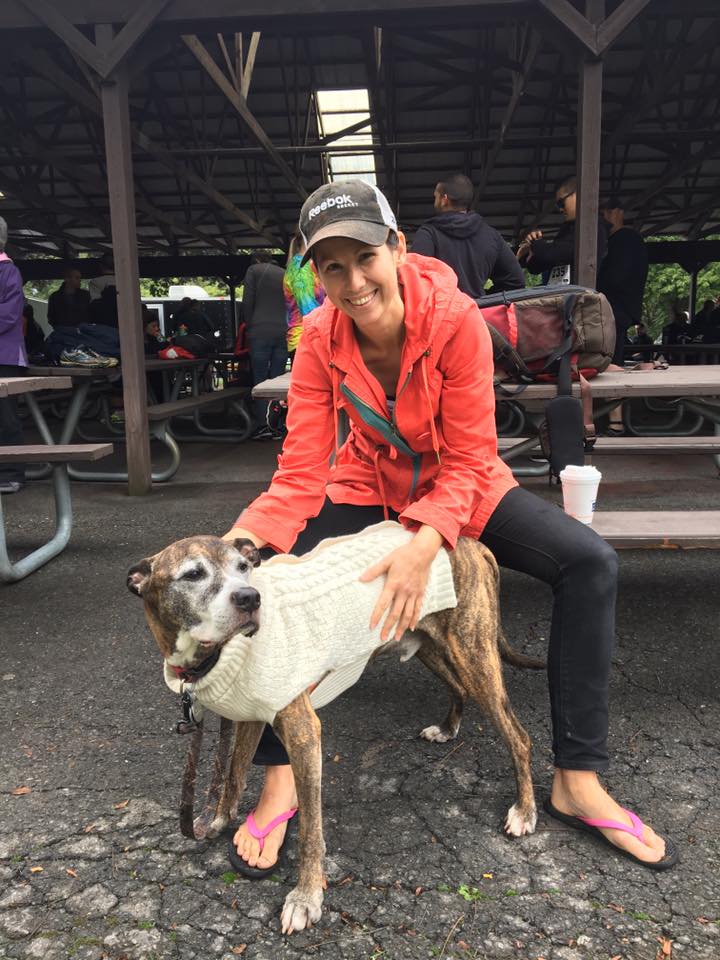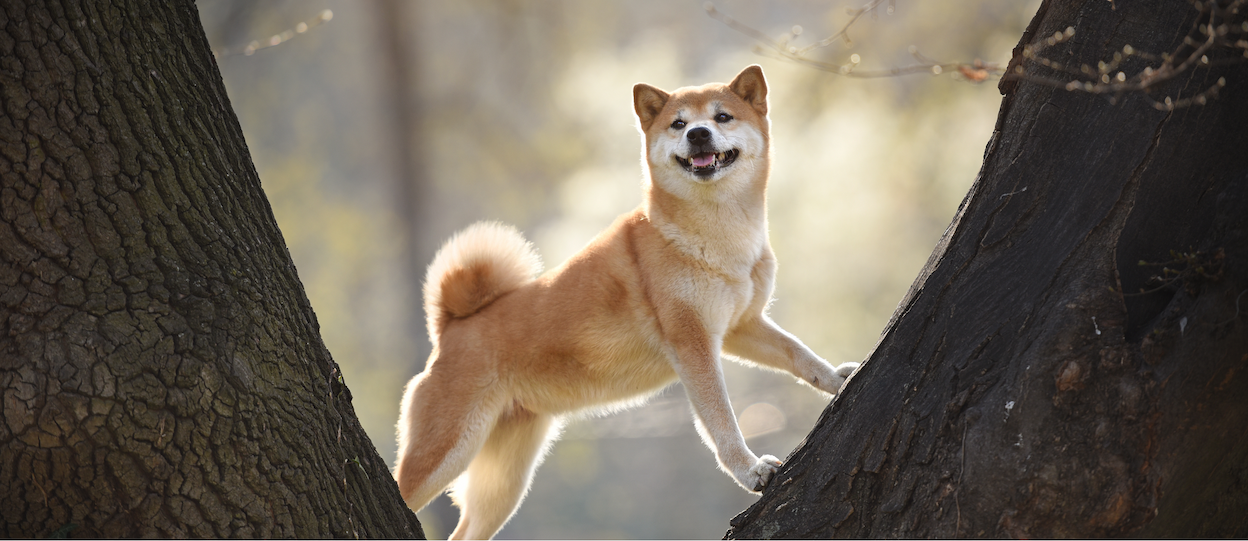
Welcome to the blog!
This week, we’re discussing one of our simplest and most impactful handling techniques – the Protector Position – to decrease reactivity and improve overall responsiveness on leash.

How to Use the Protector Position
Are you familiar with the Protector Position? This simple body positioning technique is something we’ve been using at Instinct for more than a decade to help leash reactive dogs be less reactive around their triggers.
But its usefulness stretches far beyond reactivity management. In our humble opinion, learning how and when to employ the Protector Position can have a significant, positive impact on your relationship with your dog, and on how they view the world around them.
Let’s dive in and learn more about what it is, why it works, and how to use it.
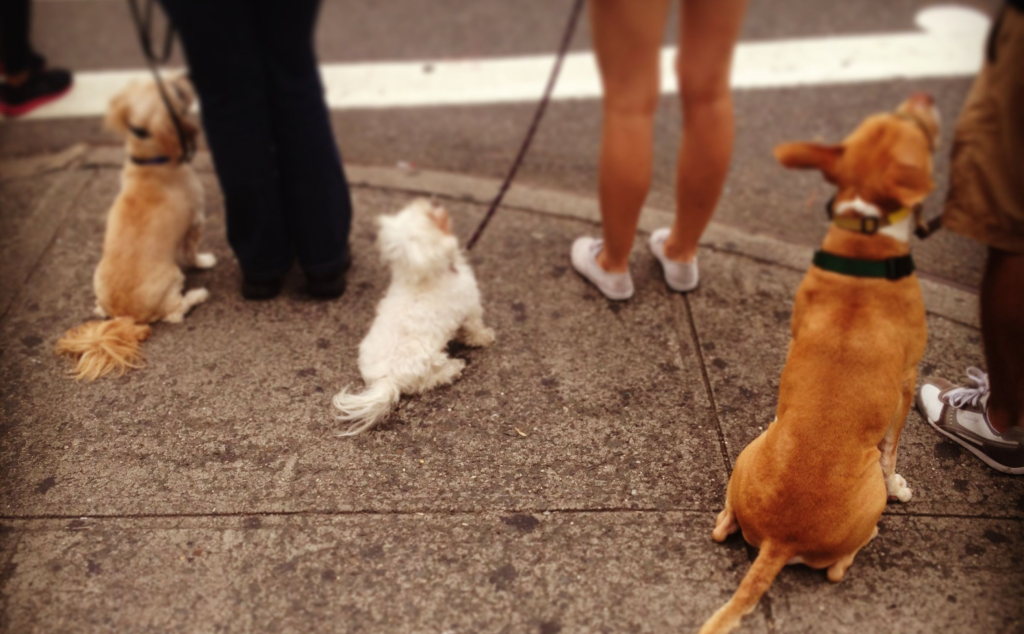
I. The Protector Position, Defined
The Protector Position is a position you take relative to your dog when they are on a leash, to buffer and protect them from concerning or exciting stimuli in the environment that are too close for comfort.
To do it, position yourself next to your dog, facing the same direction as them, so their eyes are roughly in line with the seam of your pants, or—more easily remembered—so their Nose is Behind Your Toes.
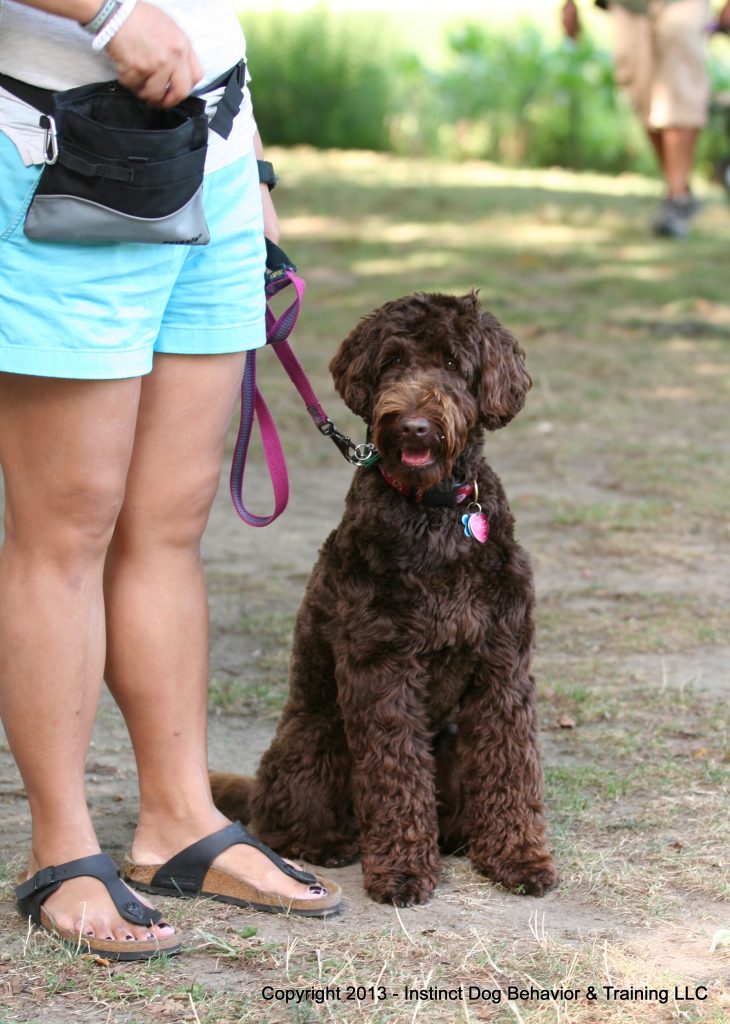
The Protector Position in Action
Client Heidi stands in the Protector Position with her dog Seamus as he watches another dog walking by during an Alumni class. Notice how her leash is (temporarily) short but relaxed, so she can easily manage the situation if Seamus suddenly lunges forward. If Seamus becomes more alert about the other dog, Heidi can take a teeny step forward so Seamus’ nose is another couple of inches behind her toes, to see if that helps relax him. If his levels of concern escalate, she can step in front of him & execute a U-Turn to create more distance from the trigger.
Using the Protector Position around triggers can significantly decrease reactive episodes of lunging and barking—especially when it is paired with other behavior modification techniques.
II. When & How to Use the Protector Position
While the Protector Position is incredibly helpful and impactful for leash reactive dogs, it is useful in any situation where an owner wants to shelter or buffer their dog or puppy from something concerning, agitating, or exciting in the environment that comes a little too close for comfort —making it easier for the dog to remain calm and responsive to their handler.
The Protector Position can be employed while you and your dog are stationary, or while you’re walking together.

Scenario: While walking, you see an approaching stimulus that is likely to cause your dog to become excited, frustrated, or fearful. This might be another dog, an excited child, a delivery person, or someone who is making lots of eye contact and trying to engage with your dog.
As you get closer to the trigger, try this:
- Position yourself so you are IN BETWEEN your dog and the oncoming stimulus. It should look like this: TRIGGER | YOU | YOUR DOG.
- Shorten the leash so you can keep your dog in the desired position if they attempt to lunge forward. Ideally, the leash will be short but relaxed. If your dog puts some pressure on the leash themselves as they try to move toward the trigger, just anchor your hand in place at your side, as opposed to actively pulling back against them (this is where an appropriate leash length is key)
- Assume the Protector Position: Step ahead of your dog slightly so their Nose is Behind Your Toes
- Maintain relaxed, confident posture: back straight, shoulders relaxed
- Angle AWAY from the trigger as you pass, pointing your toes and shoulders away from the trigger so you make an arc around them
- Once you’re past the trigger and your dog is moving with you, let out some additional slack on the leash and relax out of the protector position; praise your dog and offer a food treat

Scenario: While standing still on a walk, you see an approaching stimulus that is likely to cause your dog to become excited, frustrated, or fearful. Or, you’re walking but find yourself needing to stop and wait while multiple triggers pass from different directions.
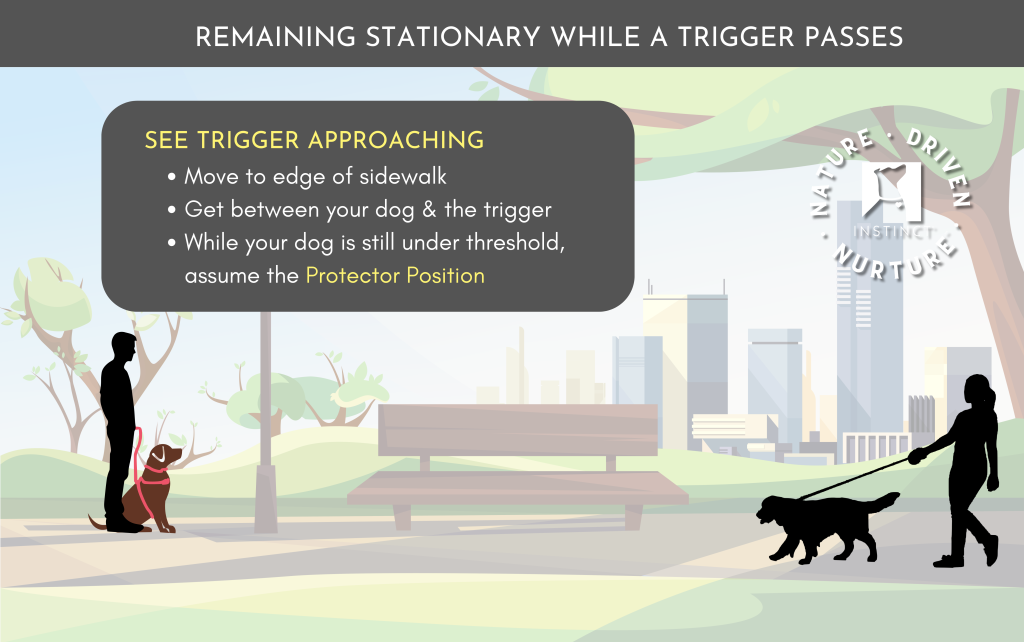
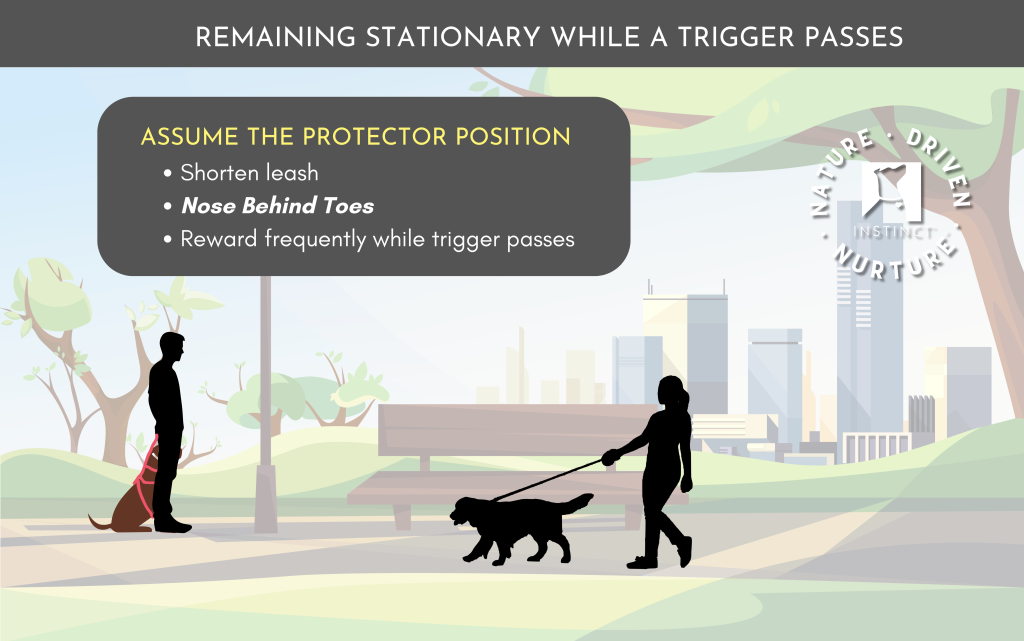
As the trigger gets closer, try this:
- Again, position yourself so you are closer to the trigger than your dog (if you were driving in lanes on the road, it’d go TRIGGER | YOU | YOUR DOG)
- Shorten the leash so you can prevent your dog from lunging out in front of you
- ASSUME THE PROTECTOR POSITION: Facing the same direction as your dog, step ahead of them slightly so their Nose is Behind Your Toes
- Focus on your dog as the trigger passes; reward frequently if they’ll accept treats
- If you need to abort suddenly, you’re in a perfect position to do an emergency U-Turn
Note: If the approaching trigger is on a collision course for you and your dog, i.e., and owner is allowing their dog to pull right up to yours, do not remain in position! Abort by using an Arc-By or Emergency U-Turn.
III. Why the Protector Position Works
While dogs are the only ones who could really tell us why, exactly, this positioning is so darn effective at reducing reactivity, we feel pretty confident that it boils down to a combination of three main factors:
1. It Provides a Physical Barrier
At the most basic level, when you step into the Protector Position you become a physical barrier that provides some level of separation from the approaching stimulus.
Think about how it feels to walk down a narrow sidewalk on a very busy road, when there are no sidewalk barriers separating you from the traffic. Now, imagine walking on that same sidewalk, but with sturdy cement barriers in between you and the vehicles whizzing by. You’d likely feel far safer and more relaxed with the barriers in place.
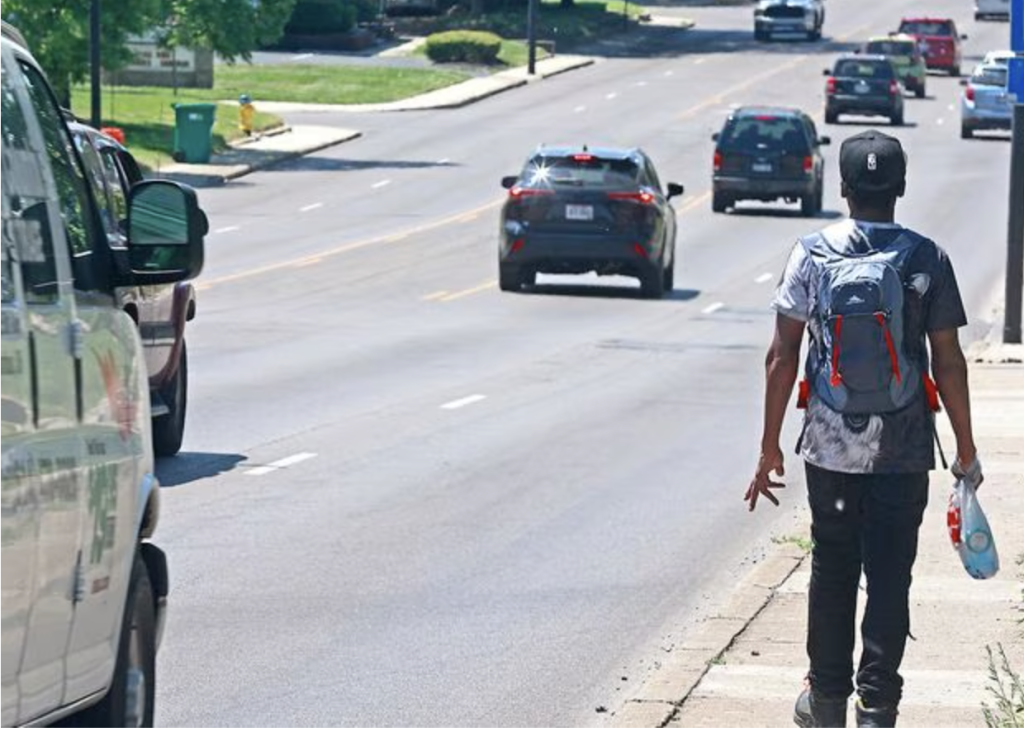
The Protector Position creates a similar effect with our dogs and approaching triggers. By providing some degree of physical separation, we can have a big impact on how vulnerable our dogs feel. In the case of dogs who are just happily excited about the approaching stimulus, the physical barrier impacts how accessible they believe that stimulus to be.
2. It Increases Handler Salience
Stepping into the Protector Position ensures you are within your dog’s field of vision, and thus a more salient (perceivable) part of their environment—basically, they’re less likely to forget that you’re actually there with them on the walk.
When your dog is aware of your presence, it may have a social buffering effect that reduces feelings of fear and anxiety. Observed in a multitude of species, social buffering is the phenomenon whereby a stressful event is made less stressful for an individual, just due to the presence of a trusted social partner (a friend, family member, etc.).
Further, being salient in the environment makes it easier for your dog to actually hear your cues and respond to your direction around triggers, reducing reactions.
3. It Conveys Social Support & Protection
Most dogs are incredibly attuned to the body language & positioning of the humans around them. It’s a big part of the innate social intelligence that endears them to us. Stepping in the Protector Position communicates important social information to our dogs about our awareness of, and involvement in dealing with, an approaching trigger.
In our experience, stepping into the Protector Position seems to convey to our dogs that we intend to take the lead in navigating this concerning situation—not in a “Back off and do as I say” kind of way, but in a “Don’t worry buddy, I’ll handle this” kind of way.
Safe, Predictable, Helpful Leadership
Over time, consistently taking an active role on walks by stepping into the Protector Position around triggers fosters trust, and supports your dog’s view of you as a safe, predictable, helpful (and competent) leader who is tuned in and always ready to help them through challenging situations.
NEED TRAINING OR BEHAVIOR SUPPORT?
Check out the resources below!

Check out Instinct’s award-winning podcast, Dogs Unknown (fka DogLab), hosted by Instinct Co-Founders Sarah Fraser (me!) and Brian Burton.

Join one of our free, live training & behavior seminars via Zoom!
Hosted by Instinct behavior consultants, these seminars include a 1 hr presentation plus live Q&A session. Open to all!
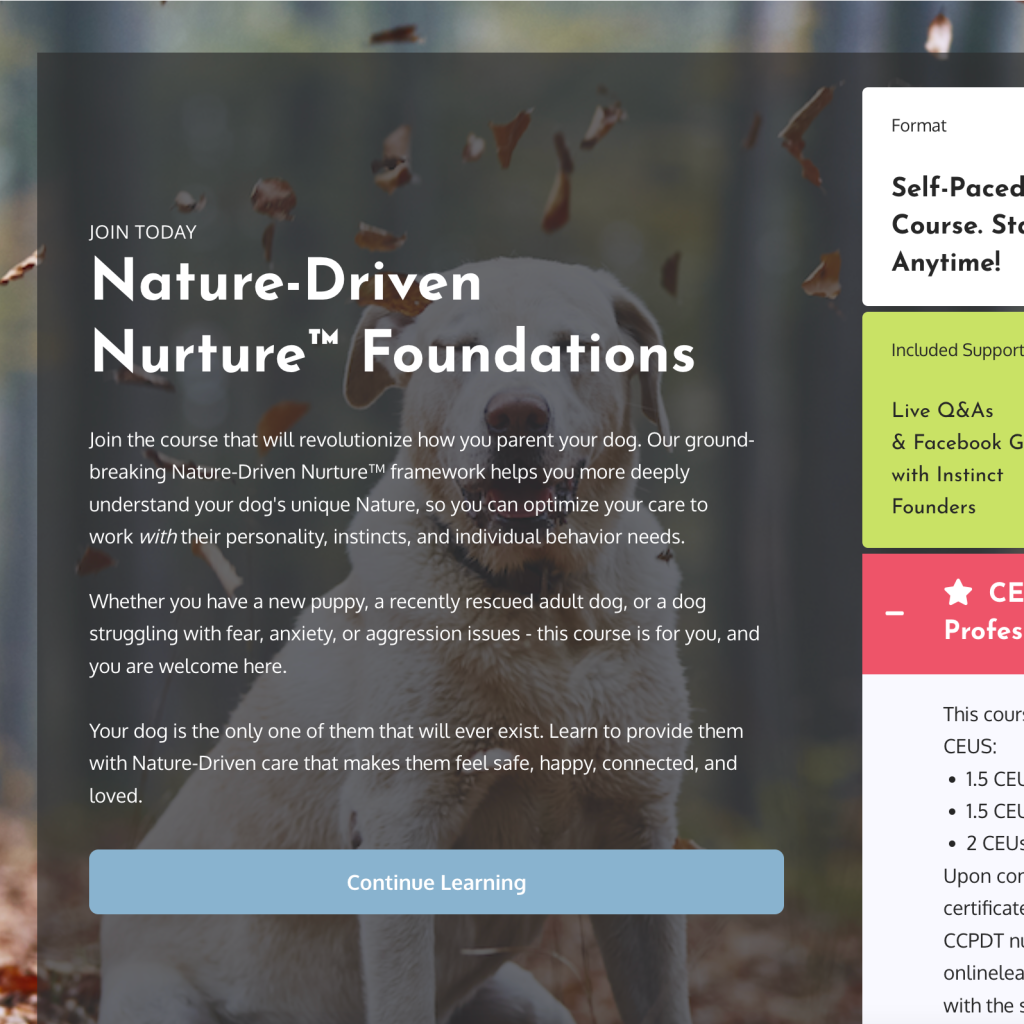
Sign up for the Nature-Driven Nurture Foundations course in our Online School. Learn our groundbreaking canine behavioral health framework that teaches you how to optimize your dog’s training & care based on their unique, individual Nature. This self-paced course includes:
- Access to private Alumni Facebook group
- Twice-monthly Zoom Q&As with Instinct co-founders
Or, contact your local Instinct for fully customized training & behavior support with certified, veterinarian-recommended trainers and behavior consultants.
